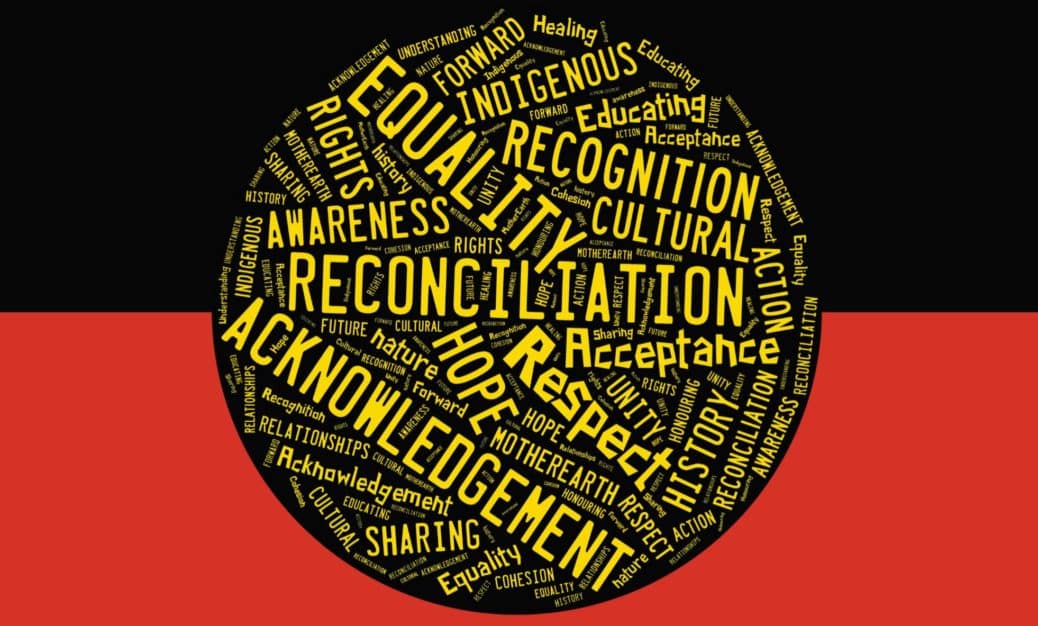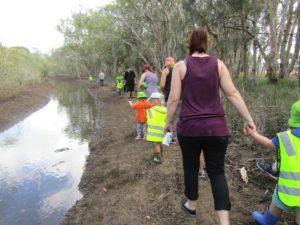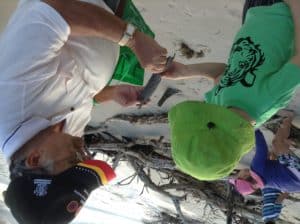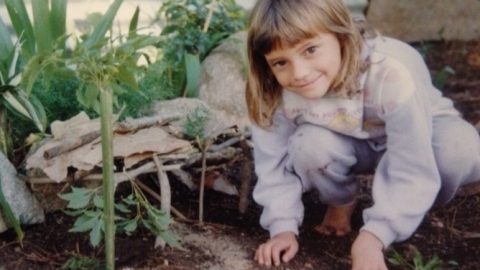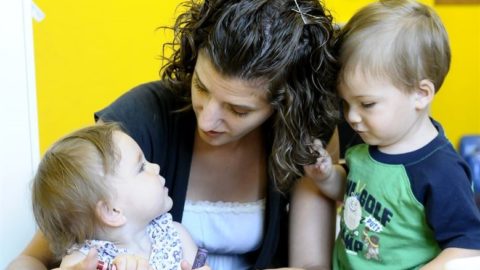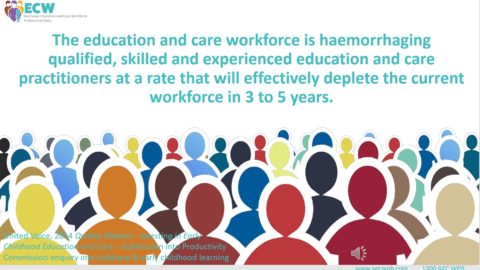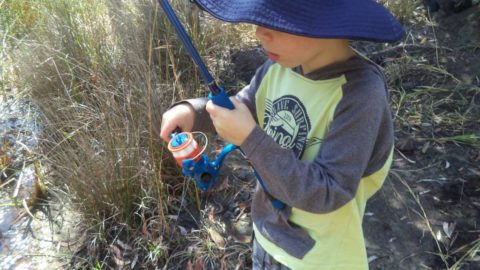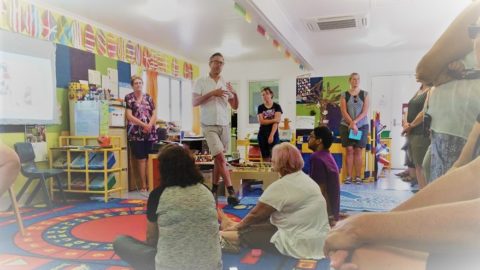Children Families and Culture
Author: Narelle Dawson
Bribie Island Community Kindergarten
What was your motivation for the practice change?
Early last year amidst professional conversations around developing a RAP that reflects the work we do here as a community, something AMAZING happened! An opportunity presented to join an Action Research Project. A project that is at the heart of what we constantly strive for at a service level. ‘Standing Up for a Natural Childhood’ and our question within this research “How can we reconceptualise the way children will engage with their local surroundings so they can truly embody their connection with the land”
Our kindergarten backs onto a nature reserve. A relatively unused natural space mostly walked by passing community members short cutting behind the kindy. Our kindy community had talked and talked some more, about using this space to benefit not just our children but the wider community. Unfortunately, up until that point in time it was just that ‘talk’, and was beginning to look, sound and feel like nothing more than a pipe dream. We got caught up in barriers…..what about snakes? What about the creek? What about being in wide open spaces? Moving beyond the fence line sometimes can take us outside of our comfort zone, especially with 22 children. BUT we revisited our philosophy which supports a belief that all children need to explore, discover, make decisions about risks they want to consider in their play, whilst in and surrounded by nature…..the land, the sky, the elements, plants and animals.
The focus and central to our core beliefs of embracing childhood, families and culture fit perfectly within the theme of the action research and hence our weekly ‘Bush Kindy ‘, monthly ‘Bush and Beach Family walks’ and our ‘Reconciliation Action Plan’ was born.
What were you hoping to achieve?
A culture of wanting to achieve excellence in all that we do reignited the desire to connect with and utilise the amazing natural bushland behind our kindy and to support this moving forward we planned a visit to C and K Boopa Werem Kindergarten Cairns, Yarrabah Pre Prep just outside of Cairns and Kirdi Mayarr Early Learning Centre Mornington Island. Why…… because we wanted to gain a sense of how Indigenous children played in and with nature and how they bring their culture into their play. Although far North Queensland and the Gulf delivered much more than we could have ever hoped for , apart from a myriad of new learning and new professional and lifelong friendships the one thing we observed is that children no matter who they are or where they live, all play the same. The only differing factor is that in Indigenous remote areas, fishing, camping, cooking on a camp fire, hunting, spirituality and yarning are all elements present in their everyday play!
We also hoped to connect with a Bribie Island Indigenous person in order to learn more about the way Aboriginal people lived, used this land and survived in the elements. This was an imperative step in our research if we were to gain a better and more authentic understanding of how the Joondoburri people lived, hunted and used this land where our children now explore and play.
We wanted to include the voices of our children, families, community and Aboriginal & Torres Strait Islander people when developing a Reconciliation Action Plan. A plan that is authentic, meaningful and a living commitment to change.
Finally, we wanted to engage our local Council in talks about officially making the bush space where we play a community space with more bush tucker plants including plaques with identification and explained uses, natural tracks, a yarning circle and a name for this nature space.
What is your practice?
To further support the Action Research, we engaged in Professional Development with a specific focus on the land and the sea which is relevant to our children and families here on Bribie. We then connected with a local Indigenous Day Respite Centre who introduced us to our beautiful Uncle Ron from here our journey soared! We listened to the voices of our children, families, community and colleagues and especially to the voice of Uncle.
What were your successes and challenges?
Our successes were that every which way we turned doors opened! We built a deeper respect for Aboriginal & Torres Strait Islander people and their culture which in turn has strengthened the way we embed this within the teaching and learning environment, whether that be within our fence line or beyond. We now have a volunteer Indigenous educator in Uncle Ron, we engage in weekly bush, creek and mangrove play, we explore local beach and bush spaces with our families, we have a book published about our journey that includes information about the flora, fauna and wildlife that inhabits the space where we now visit and play and we have a RAP that represents a true commitment to living our part in reconciliation and a RAP follow up, that explains how we will commit to this plan.
We continue dialogue with our local council with regards to our hopes and dreams for our community and our suggestions to council regarding natural tracks, plants and a yarning circle are tabled for discussion and consideration. We have biannual working bee’s guided by and with Council Landcare experts in order to learn more about the flora and fauna in the bush where we play.
We have a RAP that was designed by our children, families and community and a commitment to ensure this plan is embedded in our everyday living and learning.
The challenges …..well to be honest they were small and nothing we couldn’t overcome because we were determined that nothing would stand in our way of success! We faced our fears head on. We learned as much as we could about snakes and in particular about the species of snake we may encounter. We had a snake breeder and handler come in to teach us precautions and what we should do if we come across a snake. We did specific first aid training around snake bites.
Where to now?
There is no end to this research. When you think of children and a natural childhood, when you think of cultural learning and when you think of Reconciliation it is a road that has no conclusion. Our weekly Bush explorations at Joondoburri Walk Reserve and monthly Family Bush and Beach Walks, our RAP that is meaningful and relevant to our community are all a never ending story.
As a team and community collectively we have delved deeply into our core values. We have travelled this road together for many years and we have learned firsthand. It’s about relationships, relationships, relationships I cannot stress this enough! For those who are still dipping their toes please take heart ‘it won’t happen overnight but it will happen’ as long as you build reciprocal and respectful relationships. Listen to the stories of others and share your story too. Cultural awareness plays a big part in reconciliation. If we are more educated about the culture, the history & the struggles of Aboriginal & Torres Strait Islander people then armed with this knowledge we all can move forward for a better future especially for generations to come.
We as Early Childhood Educators can play an important role – we are in a unique position to educate, children, families, colleagues, ourselves and the wider community because the children of today and of the future need to know the history of the land and its First Nations People. Here on Bribie Island our children know we are on Gubbi Gubbi land and the first people thousands of years ago were the Joondoburri people and that close by we have Middens ‘a place where people would sit and eat their seafood, and the shells were their kitchen scraps’. They know we have ‘fish traps’, they know that certain plants where we play were a food source or used for medicinal purposes, they know which were shelter, scar or canoe trees. They know Aboriginal people camped where we play because there is a food source of bats close by and other creek sea life too. Having resources and flags that represent the Aboriginal & Torres Strait culture and artwork is a great start but taking a bigger leap, attending as much cultural awareness professional development as possible, researching your local area with and alongside your children and families, and an Indigenous person who knows that land, is showing a true commitment to working towards reconciliation.
I close with the words of a respected colleague and friend, a beautiful, inspiring and strong Aboriginal woman April Cunningham who imparted to me such powerful words……. “For me for so long we have learnt the western way and it is time for western way to learn our way” and “We also learn a different way to non-indigenous. We learn through being on the land and Mother Earth. We live and breathe Mother Earth. We are so connected to the land, animals, spirits, earth, people. So understanding this, is vital in how we teach. We should not learn about culture; we need to learn through the culture”.
Narelle received a recycled indigenous print mat from Global kids Oz for her story.

